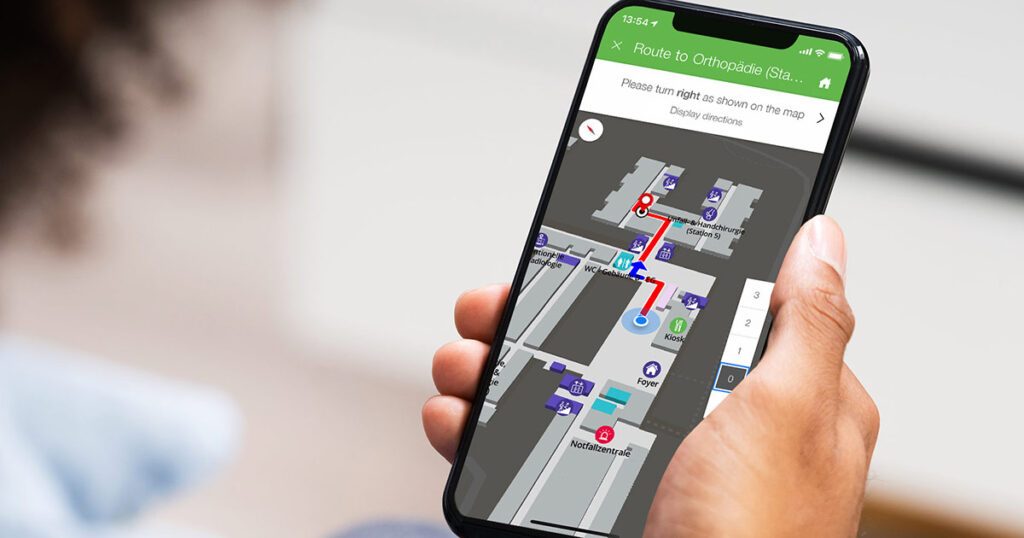In today’s fast-paced world, navigating complex indoor spaces such as malls, airports, hospitals, and office buildings can be a challenge. This is where indoor wayfinding technology steps in, offering innovative solutions to help people find their way with ease. By combining advanced digital tools and user-friendly interfaces, wayfinding technology transforms indoor navigation, enhancing convenience and accessibility for all.
What Is Indoor Wayfinding Technology?
Indoor wayfinding technology is a system that helps users navigate indoor spaces by providing clear and interactive directions. Unlike traditional maps or static signage, these systems leverage modern tools such as GPS, Bluetooth beacons, Wi-Fi, and Augmented Reality (AR) to deliver real-time guidance. These technologies integrate seamlessly with mobile devices, kiosks, or digital signage, making them highly versatile.
The Benefits of Indoor Wayfinding Technology
-
Enhanced User Experience Navigating large and unfamiliar spaces can be stressful, but indoor wayfinding technology simplifies the process. With step-by-step directions and intuitive interfaces, users can move confidently and efficiently.
-
Increased Accessibility Indoor wayfinding solutions cater to diverse user needs, including those with disabilities. Features such as voice-guided navigation, high-contrast visuals, and tactile feedback ensure inclusivity.
-
Time-Saving Convenience For environments like airports or hospitals where time is critical, wayfinding technology reduces the risk of delays. Users can quickly locate gates, wards, or other destinations without confusion.
-
Improved Operational Efficiency Businesses and institutions benefit from fewer inquiries and less congestion as visitors rely on self-guided navigation. This allows staff to focus on core responsibilities instead of constantly assisting with directions.
Applications Across Industries
Indoor wayfinding technology is transforming operations and experiences in various sectors:
-
Healthcare: Hospitals and clinics use wayfinding systems to guide patients and visitors to specific departments, rooms, or facilities, reducing stress and enhancing patient satisfaction.
-
Retail: Shopping malls leverage wayfinding solutions to direct shoppers to stores, parking areas, and amenities, improving overall customer experience and increasing foot traffic.
-
Transportation: Airports and train stations implement wayfinding technology to provide real-time updates on gates, baggage claims, and transit connections.
-
Education: Universities and large campuses use digital wayfinding to help students, staff, and visitors locate lecture halls, offices, and event venues.
-
Hospitality: Hotels and resorts adopt wayfinding solutions to assist guests in navigating their premises, from conference rooms to recreational areas.
Features of Effective Wayfinding Systems
A robust indoor wayfinding solution includes:
-
Interactive Maps: Dynamic, zoomable maps that adapt to user preferences and locations.
-
Customizable Routes: Tailored directions based on accessibility requirements or preferences.
-
AR Guidance: Augmented reality overlays provide visual cues for navigation in real-world settings.
-
Integration with IoT: Connectivity with smart devices enhances functionality, such as finding nearby services or facilities.
-
Real-Time Updates: Ensures accuracy with real-time information about closures, crowd levels, or service changes.
How to Implement Indoor Wayfinding Technology
Implementing indoor wayfinding technology begins with assessing your space and understanding your users’ needs. Collaborate with experienced developers or solution providers to design a system tailored to your requirements. Focus on intuitive design, scalability, and seamless integration with existing infrastructure. Additionally, promote the availability of the wayfinding system through signage, apps, or website updates to maximize adoption.
Conclusion
Indoor wayfinding technology is revolutionizing how people navigate complex spaces. By prioritizing user convenience, accessibility, and operational efficiency, it’s a win-win solution for both businesses and end-users. Whether you’re managing a sprawling campus, a bustling airport, or a multi-level retail center, investing in wayfinding technology is a smart move that enhances experiences and drives success. Take the first step toward effortless navigation today!














